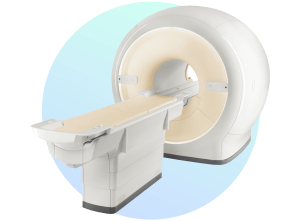

CT Scan
A CT Scan is a special type of x-ray technology that produces detailed pictures of structures inside your body. During the scan, you will lie on a table. You will hear a faint humming and clicking as the machine operates; however, the CT unit is open enough for you to be able to communicate with your technician while the procedure takes place.
Examination


MRI
MRI (magnetic resonance imaging) is state-of-the-art technology that uses a computer, a strong magnetic field and radio waves to create a sophisticated, computer-enhanced image of a specific part of the body. This non-invasive procedure is a great way to see inside the body without exposing patients to ionizing radiation.
Examination


Ultrasound
An ultrasound involves the exposure of part of the body to high-frequency sound waves to produce pictures of the inside of the body without the use of ionizing radiation.
Examination


X-Ray
X-rays are the most commonly used form of medical imaging, which involves exposing a part of the body to a small doses of ionizing radiation. X-rays are a form of electromagnetic radiation that can penetrate or pass through the human body and produce shadow-like images of structures such as bones, organs, and signs of disease or injury.
Examination


Dexa Bone Densitometry
Bone density scanning is an enhanced form of x-ray technology used to measure bone loss. It is quick and painless, as the arm of the equipment passes quietly over your body to generate images.
Examination


EMG and NVC
Electromyography (EMG) and Nerve Conduction Velocity (NCV) studies are ordered to evaluate for injury or disease of muscle, nerve roots, and peripheral nerves.
